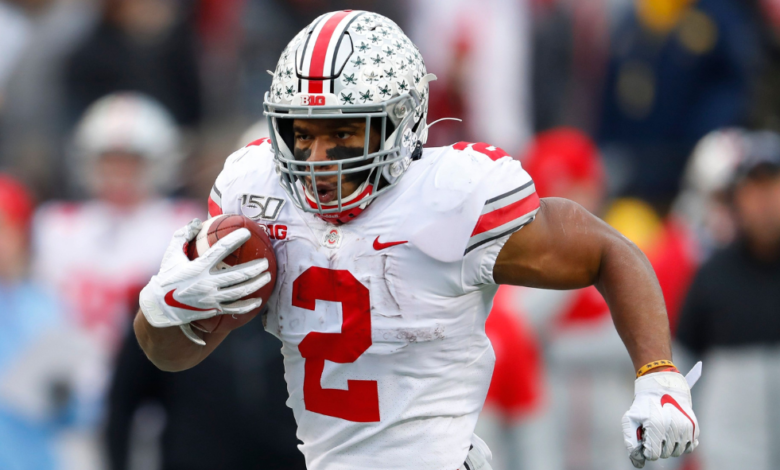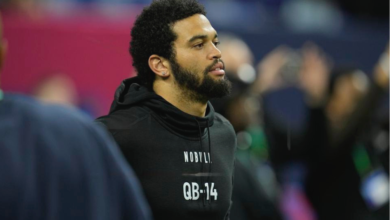
The league’s annual meeting in Indianapolis has additional objectives now that free agency is approaching, even though it is primarily focused on April’s draft.
This is the busiest period on the NFL calendar, and it always has been during my entire tenure in the football industry. For many, it defies logic—games are not being played, players are not attached to teams, and coaches have no players to work with. However, NFL clubs distinguish themselves during this time of year when facilities are deserted and locker rooms are empty. Teams are created, overseen, designed, put together, and ready for 2024 at this point. It’s the front office’s turn now; the job for coaches and players doesn’t begin until much later.
College scouting and cap space and contract management are currently the two football operations front and center.
Regarding the former, all of the scouting staff—many of whom don’t reside in the area where the team plays—go to the home base after the Senior Bowl concludes in late January. Their most crucial job is done in the gloomy War Rooms from dawn to sunset every day from late January until today when they are putting the finishing touches on the crucial “board,” which ranks the prospects according to round for the draft in April.
The board is mostly established by the time scouts depart for the NLF combine. While combined timings and pro-day results will undoubtedly influence some small adjustments and alterations, the board is largely constructed during these long, chilly winter days in late January and early February.
Regarding the cap and contract side, preparation is key. Together with the general manager, scenarios are created based on specific frameworks for contract extensions, signings and releases of free agents, and dead money accelerations. Some players may soon face cap restructures, while others may face more delicate monetary reductions (pay cuts).

However, for reasons unrelated to scouting, the NFL combine is a very significant event.
The NFL Combine as a business convention
I think that throughout my years as an agency and a team negotiator, I attended close to 20 combines. I never went to a workout in all that time. It wasn’t my position, and I was too busy for it. Many others were doing that around here.
At the NFL combine, cap and contract managers set up shop, generally to hold meetings with agents in the corners of hotels (I stayed at the Omni in downtown Indianapolis), coffee shops, or restaurants. There are discussions regarding players the club wants to release or cut, about players the team wants to decrease or restructure, and about players who are unhappy with their present contract conditions.
After that, there are meetings regarding the upcoming free agents. I did not do much of this at the NFL combine, having worked with the Green Bay Packers, a team that mostly avoided free agency. Regarding tampering, there are undoubtedly word choices made to evade accusations. Teams can question the agent: Given that your player will soon be a free agent, what kind of offers would you make on the market? That’s a general inquiry, not meddling. In addition to representing any free agents, the majority of agents also speak for other players on the clubs they are negotiating with. Cover is always available.
Of course, everyone is aware that the NFL combine is where free agency effectively starts and finishes, with agents virtually knowing where a player will sign in two weeks by “prequalifying” teams. When I tried to meet with agents representing Green Bay’s forthcoming free agents at the NFL combine, I was constantly upset because I could not even get a meeting with them since their dance cards were so packed with appointments with other teams.
For agents who read this, there’s an added lesson in team negotiations.
I frequently hear statements like, “I can make it very cap-friendly for you.” I find it annoying that every team’s cap management does. Essentially, it meant they could make it cap-friendly at first, but cap-unfriendly later. More to the point, I was concerned about the cap, not them. I would say to them, either very gently or not so gently, “You worry about your player; I’ll worry about our cap.” Please refrain from attempting to inform the team’s cap management about your cap if you are an agent reading this. That won’t go over well.
Cap spike reality
The league and the players have both expressed joy with the release of the 2024 salary cap amount of $255 million, which represents a healthy 13.4% rise from $224 million. This is expected, given the league has moved past the deficits from the “Covid years.” It’s also excellent news for clubs that are close to the cap as well as players.
However, there are a few disclaimers attached to this record number. First, even this year’s cap rises can be absorbed by the normal maturing process of player contracts. Ten to twenty-five players on average get contract raises of $1 million or more per year; others have increases of up to $3 or $5 million. The majority or all of the cap increases may be used by contract increases alone.
Don’t presume that this doesn’t affect the teams in any way either. The NFL distributes about $400 million to its clubs nationwide, with split money going toward media, licensing, sponsorships, and other expenses. And that sum exceeds the $255 million player maximum by over $150 million before any local income is deducted. The owners still get the better end of the bargain, even in the case of a healthy pay cap.
It will take time to see if the high cap figure results in new deal levels for the pending free agents. I predict that things will proceed as they do every year: a small number of early winners of golden tickets, followed by a frantic rush to get in before the funds run out.
Maybe the significant cap rise will reduce the amount of cap “push-outs,” which are reorganizations in which clubs shift big salaries into prorated signing bonuses to postpone cap hardship. As per their regular procedure, the New Orleans Saints have already used up $23 million of Derek Carr’s contract’s cap space. Perhaps in 2024, there won’t be as much of this (a cap management method I dislike).
Again, moving the cap to future years doesn’t require a magic cap worker. To set up the team such that they don’t need to do that, a cap wizard is needed.
Regarding a specific potent team weapon…
Power of the tag
The time for designating a franchise tag began last Tuesday and ends on Tuesday of next week. With the tag, clubs may remove one of their pending free agents—typically their best player—from the market. It is difficult to overstate the restricting capabilities of the tag, as I say each year.
I am aware that some claim that the tag only has an impact on the few players who are subjected to it each year—even the NFLPA, the organization that permits this to continue. That notion is entirely incorrect, even though it is accurate. Although they seldom ever use it, teams frequently utilize the tag when negotiating with their greatest players. Because of the tag, a team knows that even if a top player has one year left on their contract, they have two or three left. A player may choose to accept the team’s offer or incur the tag later on.
As the player ages and his market worth declines by one year, the tag becomes a one-year rental. Players prefer long-term commitments over short-term ones, as individuals. Rather than getting married, the tag lets teams “date” one other every year.
The market worth of almost every player is impacted by the tag: Every position player below that is impacted when the top of the position group is restricted. A player who has reached the pinnacle of their career and is a free agent may only be removed from the market in the NFL, not in any other major professional sport.
A note on Peter King
Having worked with Peter King as an executive with the Packers, an agent, and a coworker, I have known him for over thirty years. When Peter invited me to write a Business of Football piece with him at The MMQB, it was one of the joys of my career. (Now, eleven years later, here we are.) Even though I was writing for ESPN at the time, one of their main rivals, while still working on television. They understood the value of being connected to Peter’s brand.

Peter is a compassionate individual who treated every NFL employee, from owners to lower-level staff, equally. When Peter came to work for the Packers, it was not always a pleasant sight.




